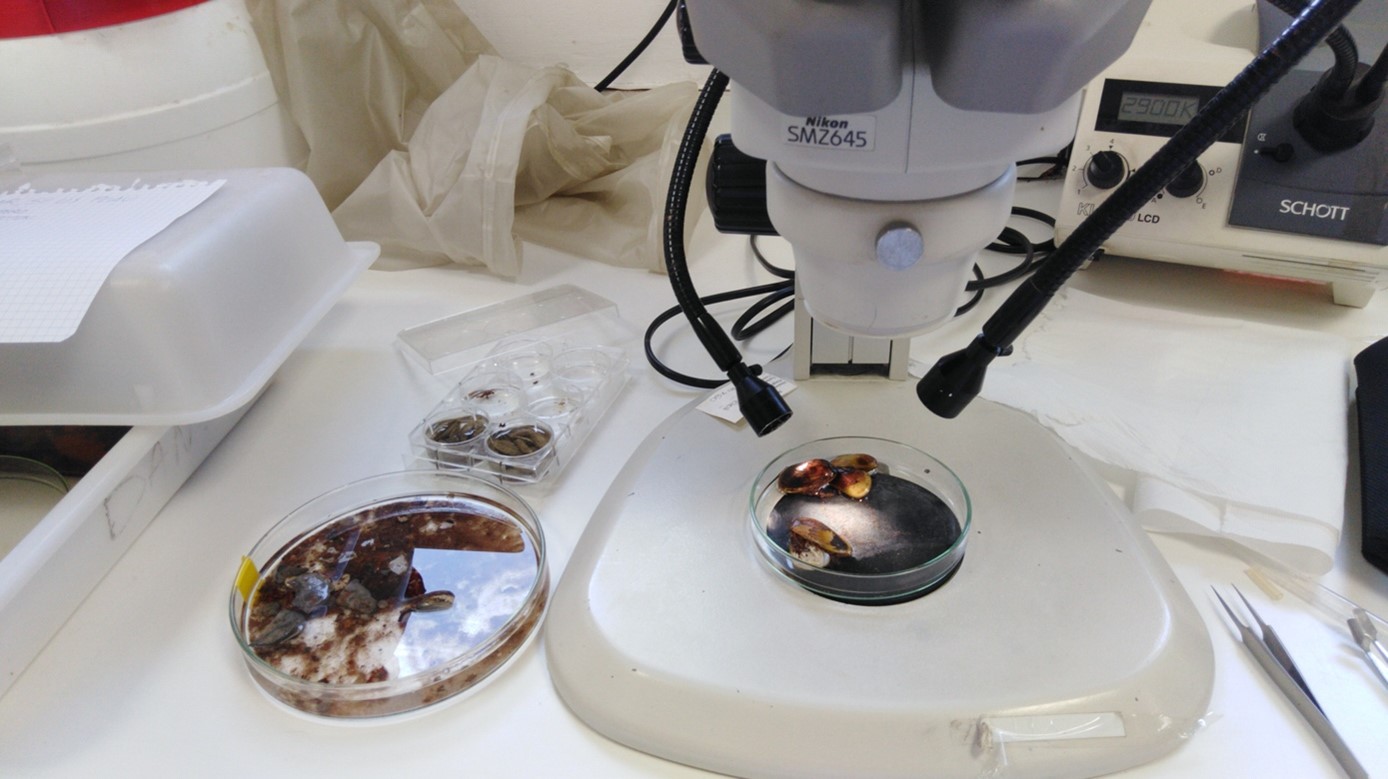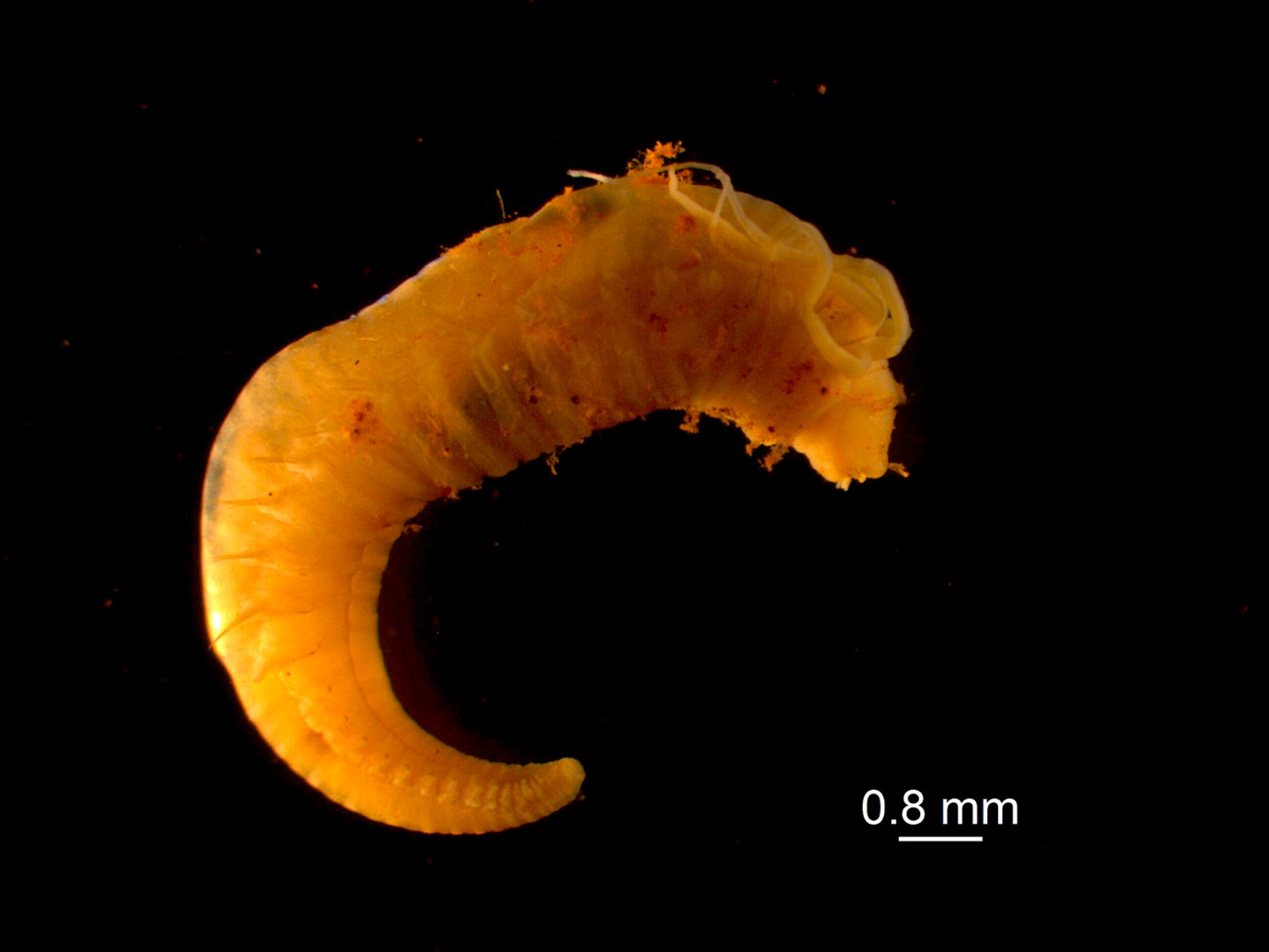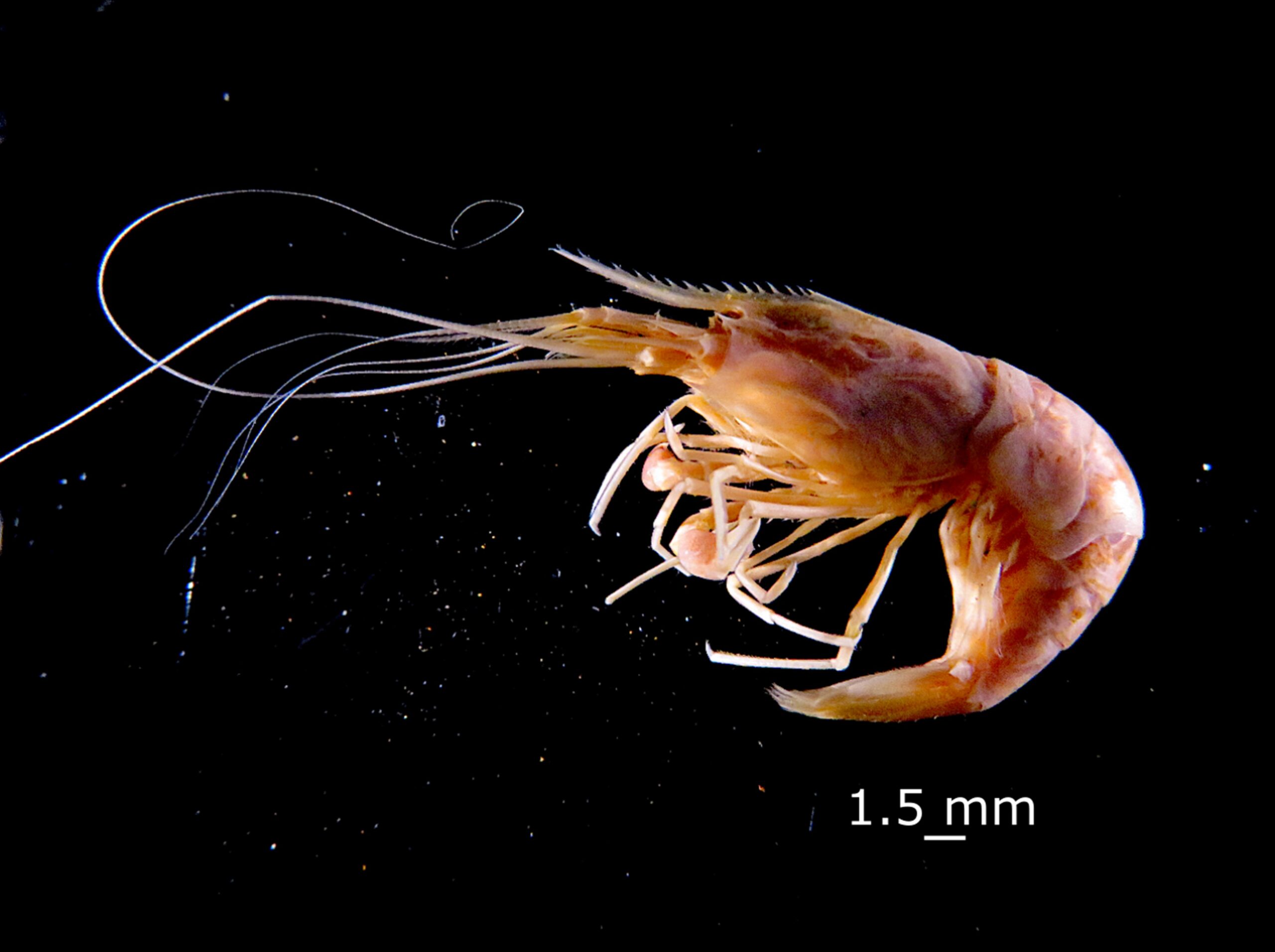Awardee Name: Dr Joan Alfaro-Lucas
Institution: Institut Français de Recherche pour l’Exploitation de la Mer (Ifremer, France)
Title of project: Collaborative visit to the Centre d’Estudis Avançats de Blanes (CEAB, Barcelona) to characterize the faunal community of the Capelinhos hydrothermal site (Mid-Atlantic Ridge) for the first time
Dates of project: 17/08/2020 – 04/09/2020
Awardee Report
Back in 2018 during the 15th Deep Sea Biology Symposium in Monterey, I met Dr Chiara Romano from the Centre d’Estudis Avançats de Blanes (CEAB, Barcelona) who lately introduced me Dr Daniel Martin, also from the CEAB. Dr Martin has a wide expertise in the taxonomy and ecology of marine benthic organisms, particularly annelids. As in my case, both Dr Romano and Martin have been working with deep-sea organic falls so we quickly started chatting about future collaborations. At that time, however I was extremely busy with my PhD in Ifremer (France). As soon as I completed my PhD in the end of 2019, I contacted Dr Martin again and alongside Dr Jozée Sarrazin (Ifremer) we designed a little collaborative project.
The Dive Deeper Research Bursary founded my collaborative visit to the CEAB. The main purpose of the visit was to characterize the faunal community composition of the new Capelinhos hydrothermal vent site. In 2013 during the Momarsat 2013 cruise, Capelinhos was discovered ~1.5 km off the well-known Lucky Strike vent field (Mid-Atlantic Ridge). Capelinhos is a very special site due to its unique chemistry related with the very poorly-altered vent fluids but it was not until recently that Ifremer scientists took biological samples from the site for the very first time.
During the three weeks in the CEAB I sorted a total of 1986 individuals of meio- and macrofauna. Alongside Dr Martin, I analysed in detail the morphology of the individuals using stereo- and microscopes. These analyses yielded the identification of 28 taxa in total, and over the half of them were classified until species level. Taxa were properly conditioned and labelled to be stored at the CEAB Collection for future analyses if needed.

One of the most striking findings were the high abundances of nematodes. The morphological identifications of these nematodes suggest close affinities with those found in the Lucky Strike vent field, 1.5 km from Capelinhos. The majority of species however belonged to the Mollusca, Annelida and Arthropoda phyla. Species of mytilid mussels, ampharetid and polynoid worms, dirivultid copepods and alvinocarid shrimps (see pictures) were especially abundant, all of them well-known groups usually inhabiting North Atlantic deep-sea hydrothermal vents.


The next step of this work will be to compare the species found in Capelinhos to those inhabiting other close vents. Also, the activities undertaken during this collaborative visit have paved the ground for further analyses such as the on-going species stable isotope analyses of d13C, d15N and d34S isotopes. The isotopic analyses will shed light on the nutrition and trophic position of species and on the food web structure of Capelinhos. These analyses will provide with the characterization of fauna undertaken at CEAB a much complete picture of the composition and function of faunal assemblages inhabiting this new hydrothermal vent site.
The collaborative visit at the CEAB has been something very special personally. Although I am from Barcelona, I undertook all my Masters and PhD studies abroad and this has been my very first research activity in my home town. The Dive Deeper Research Bursaries has also allowed me to keep in touch with science in a very sensible time as is the transition between the PhD and the first postdoc. Not only I have expanded my network of collaborators at home but I also received a first-hand training in fauna identification, especially on annelids, while continuing working on topics of my interest such as chemosynthetic deep-sea habitats. Certainly, all the results of this work will be presented in a scientific publication that we are working on, stay tuned! Last but not least, I discussed many new ideas and potential collaborations with Dr Martin, which may have important implications for my future career.
I am extremely grateful to the Deep-Sea Biology Society for all the efforts related with the process of this bursary, especially given the current health emergency situation, and for providing me with the funds to travel to Barcelona. I would also like to warmly thank the support and guidance of Dr Daniel Martin and Dr Jozée Sarrazin during the preparation and development of this project.
Awardee Profile: Joan has recently graduated in Marine Ecology. He did his PhD in Ifremer (France) where he studied the community assembly of hydrothermal vents using species and functional traits of species applying novel and quantitative approaches. He is interested in understanding the patterns of multiple facets of biodiversity and their drivers at different scales and in the deep sea, and how human activities may change them. He is currently doing a postdoc at Senckenberg Research Institute (Frankfurt, Germany) studying the species diversity of the Arctic and NW Pacific Ocean along gradients of latitude and depth.


